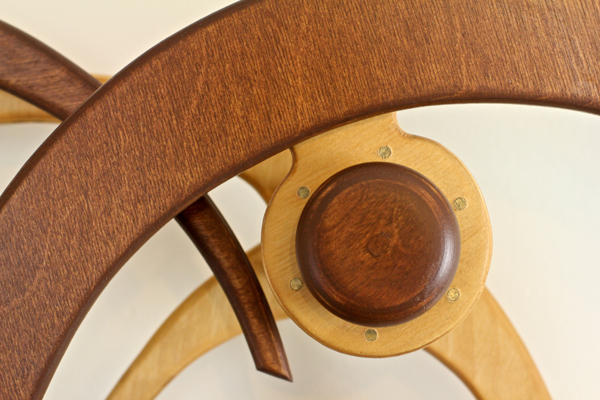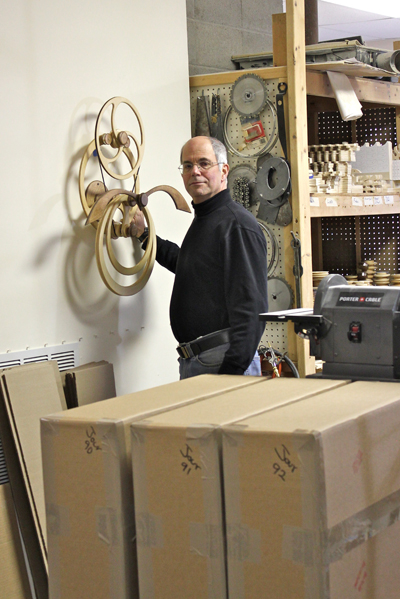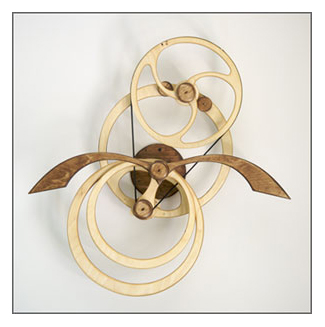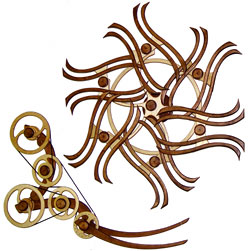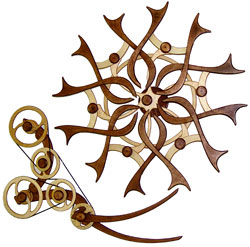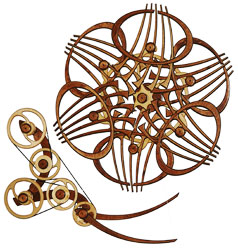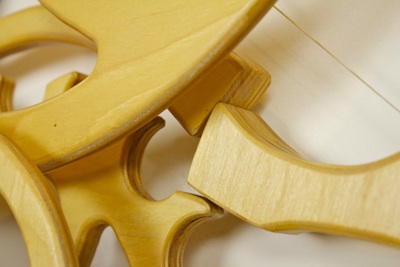David has been making kinetic sculptures for many, many years and although we have kept good records over the years, the method of recording the sculptures in motion has changed dramatically with technology. We have invested in all types of video equipment but it wasn't until recent years that we saw a great improvement in both equipment and software for recording the motion. As time permits, and as we again gain access to some of David's earlier work, we are trying to update the files with better (or in many case new) video. Last week we made a video of Aperture.
Aperture is from 1993 and was developed during the same time as Reflections and Duet. The motion of the upper assembly is a dance of variations depending on when and how strong a power kick it gets from either of its two lower mechanisms. 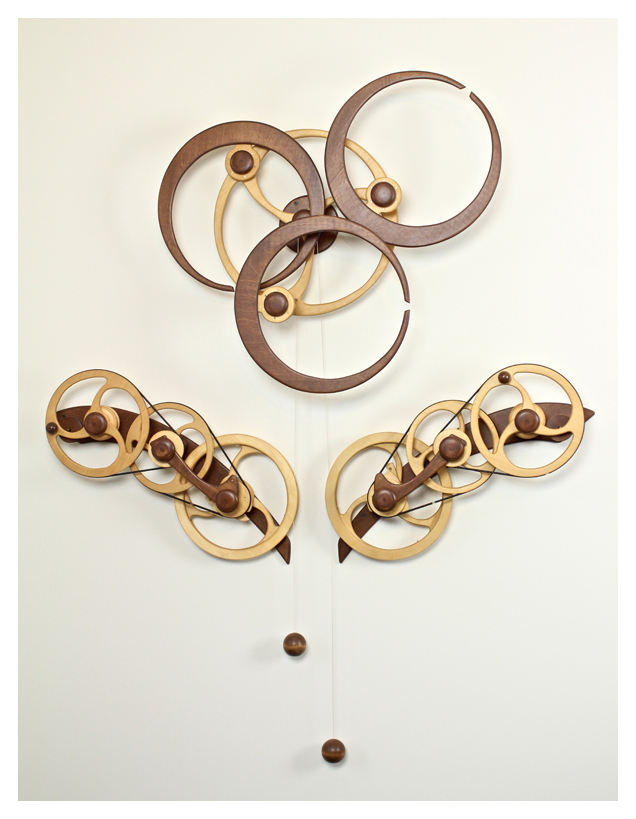
Aperture was one of the last pieces to use the descending weighted balls which cats every where loved! He first used them on Kaleidoscope in 1979. David stopped using them in designs not because of cats but because people kept yanking on them as well.
Spending time video taping this piece has again reminded David of how much he likes the motion of the three upper crescents. Not all of his earlier work inspires new ideas. This one does!


